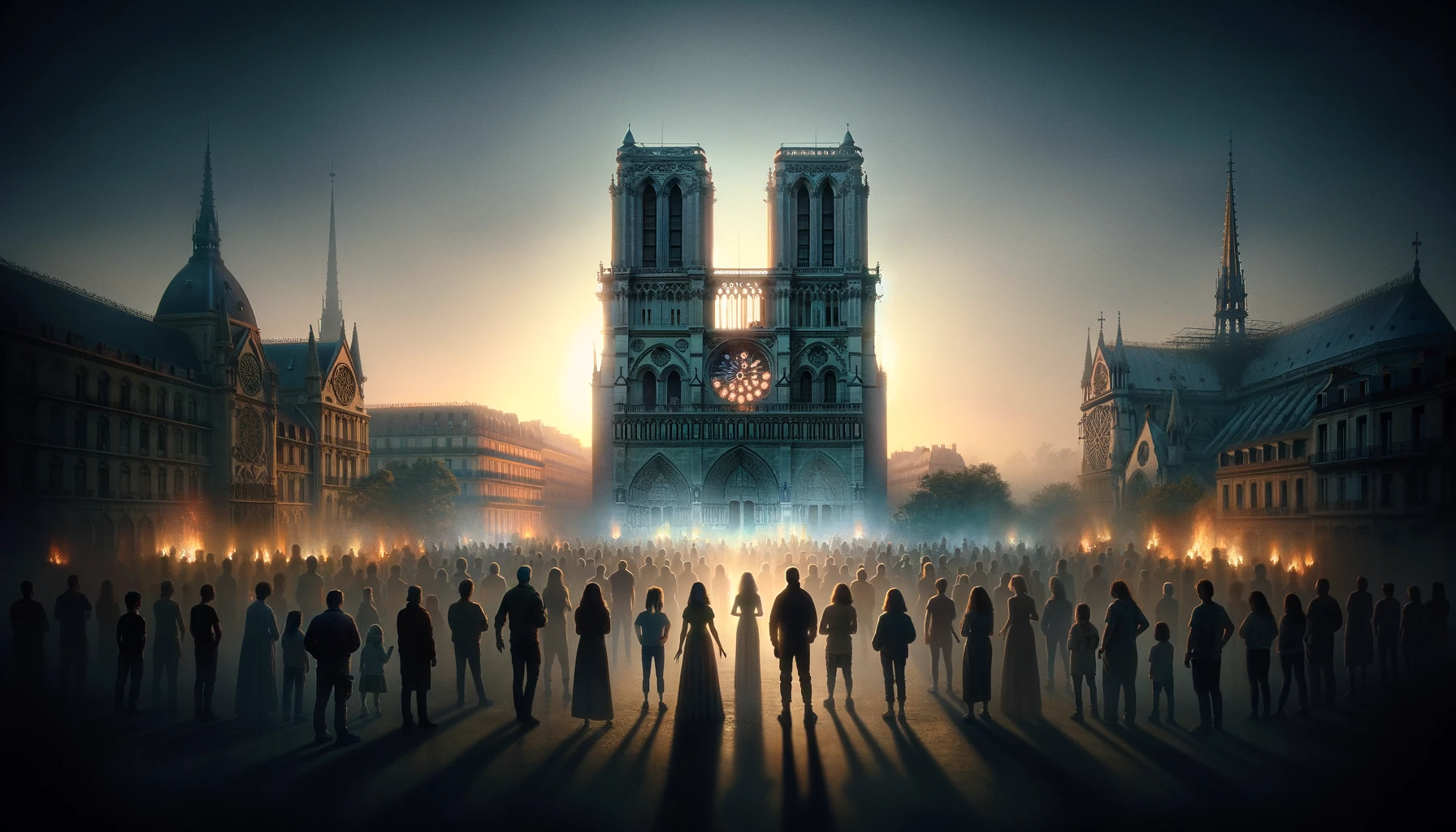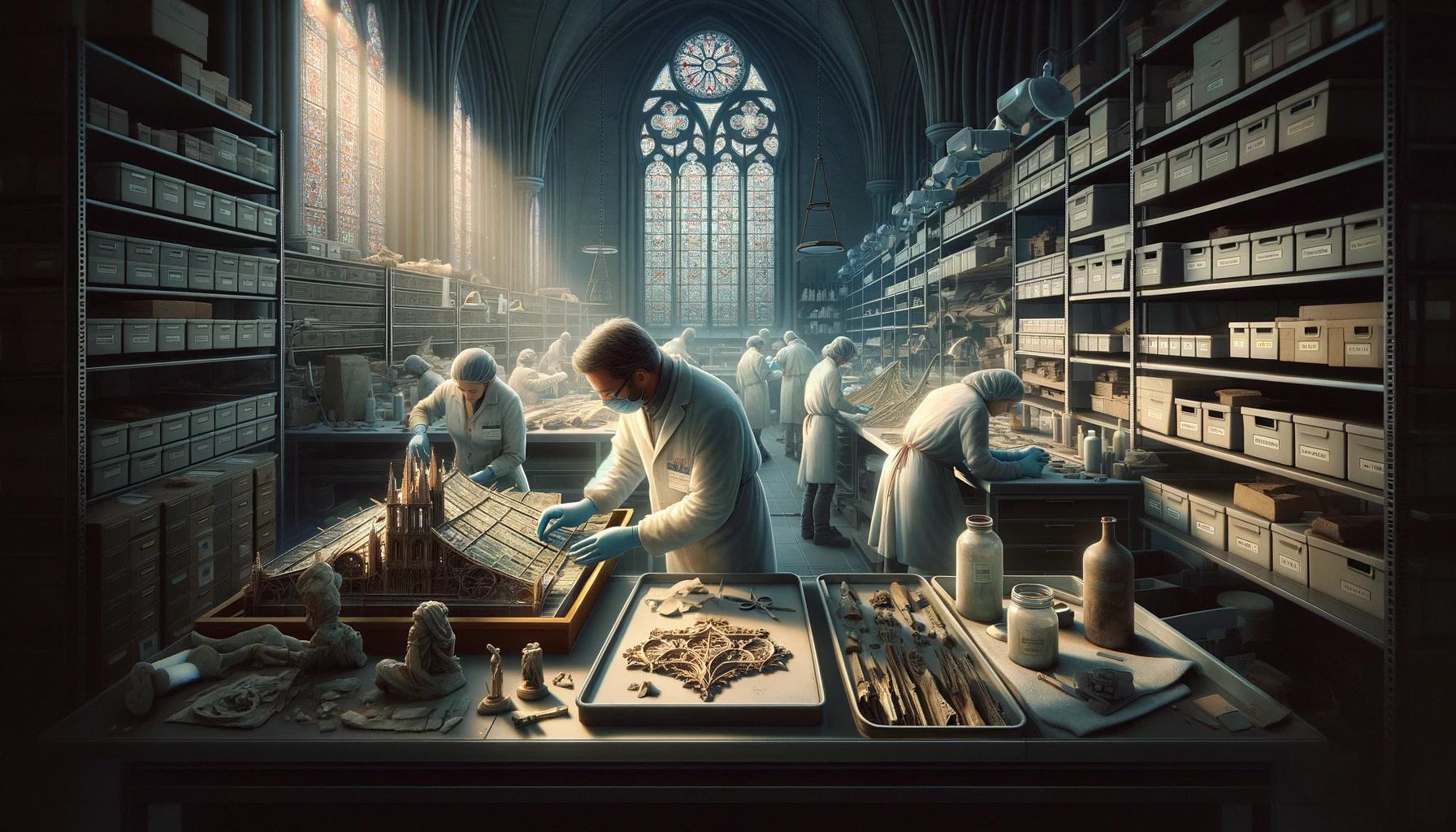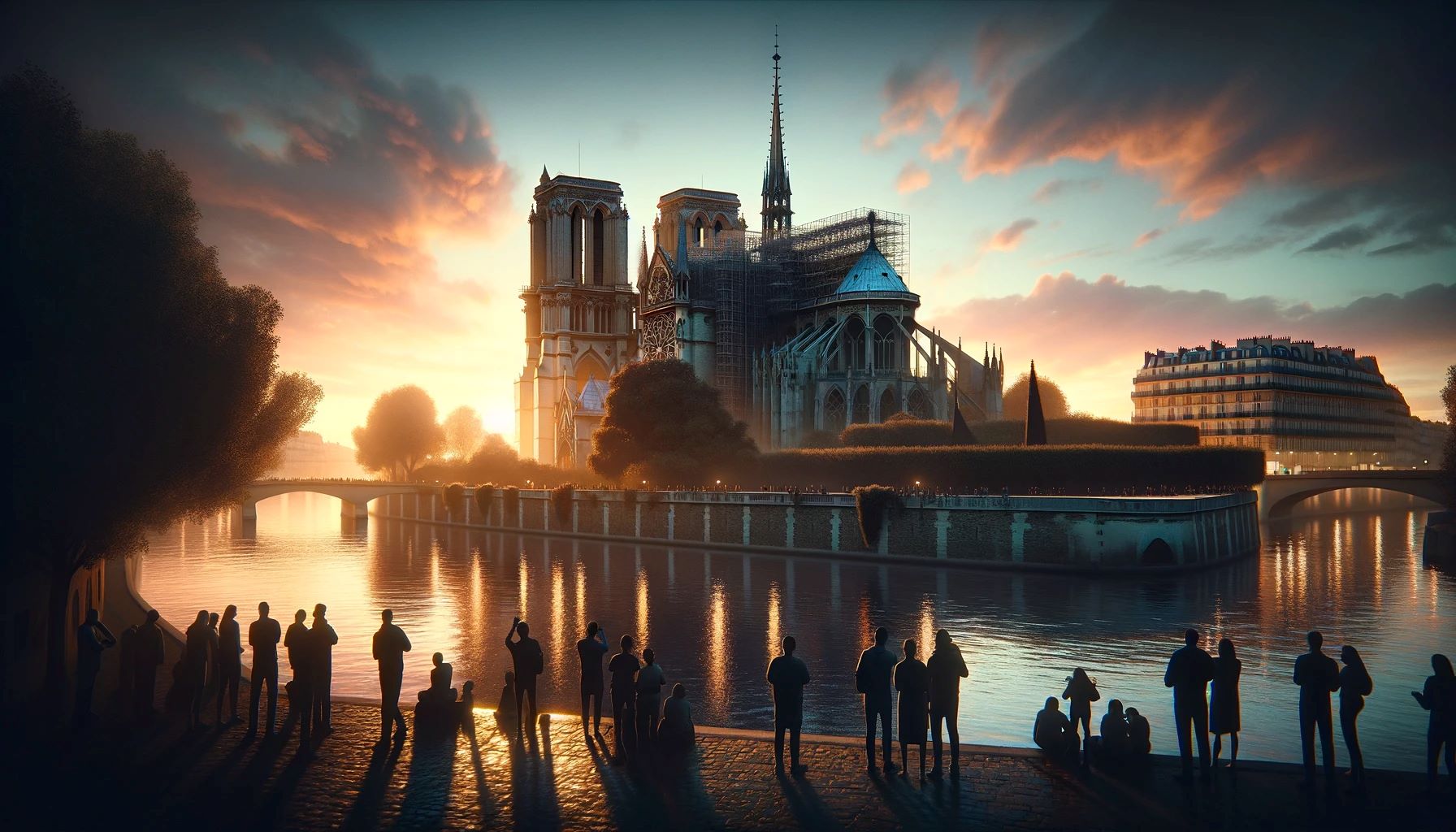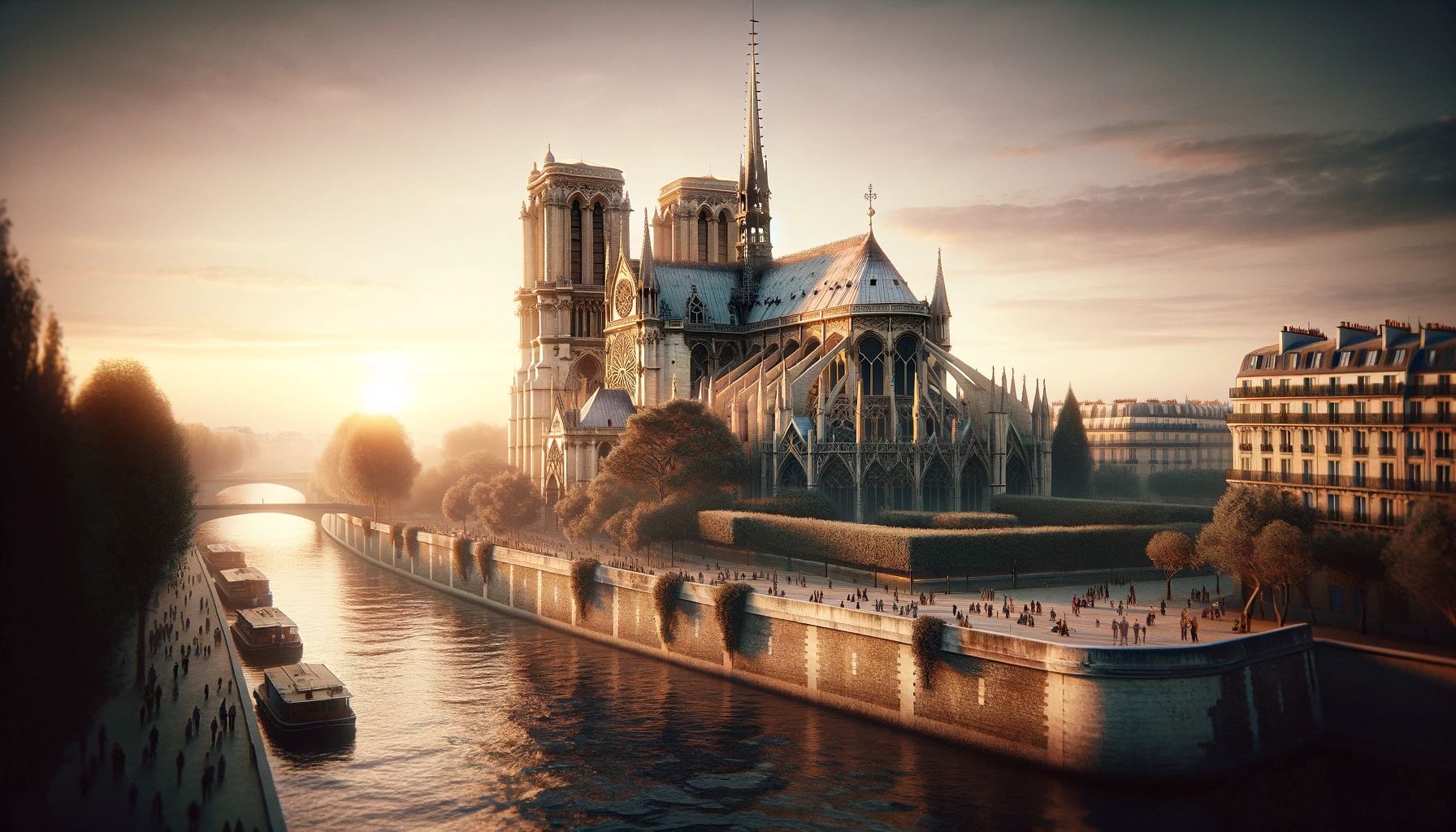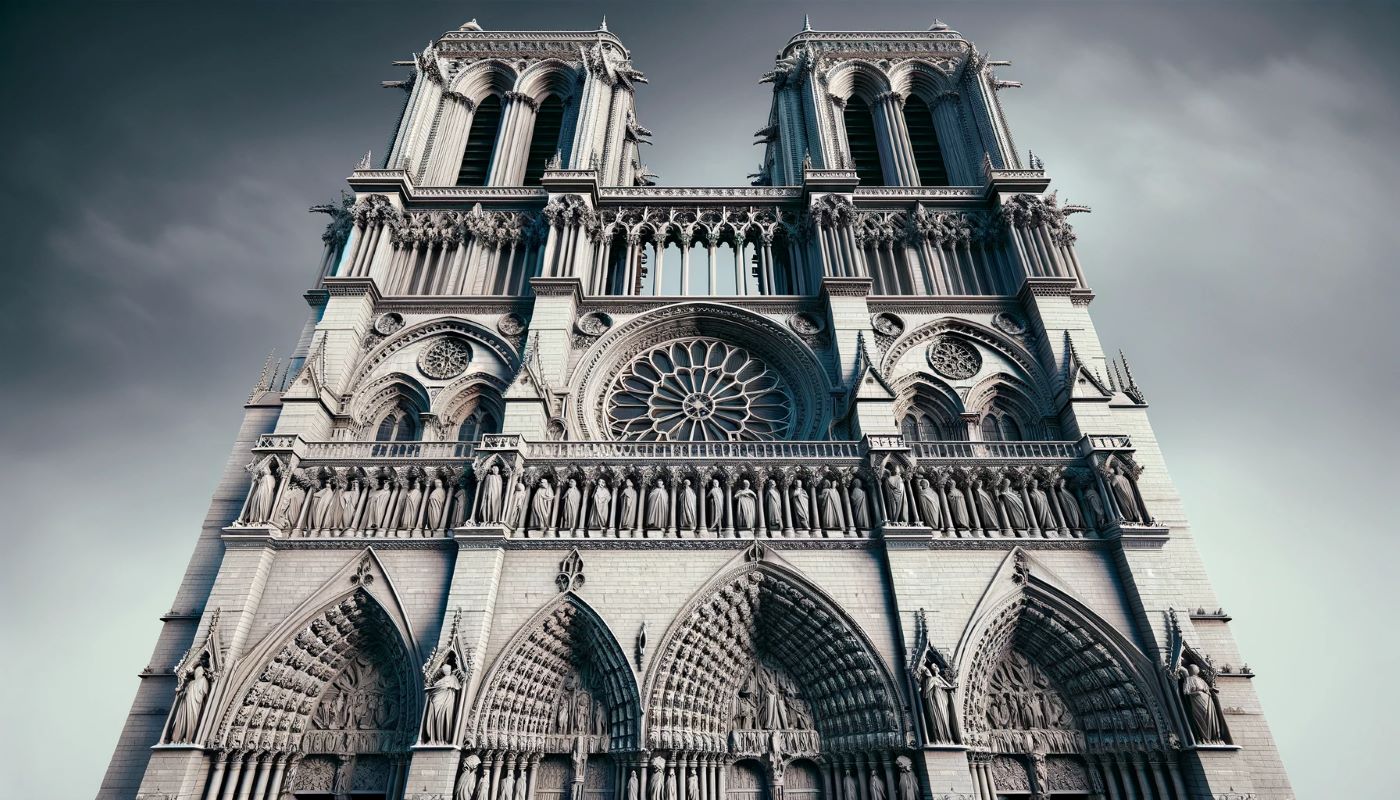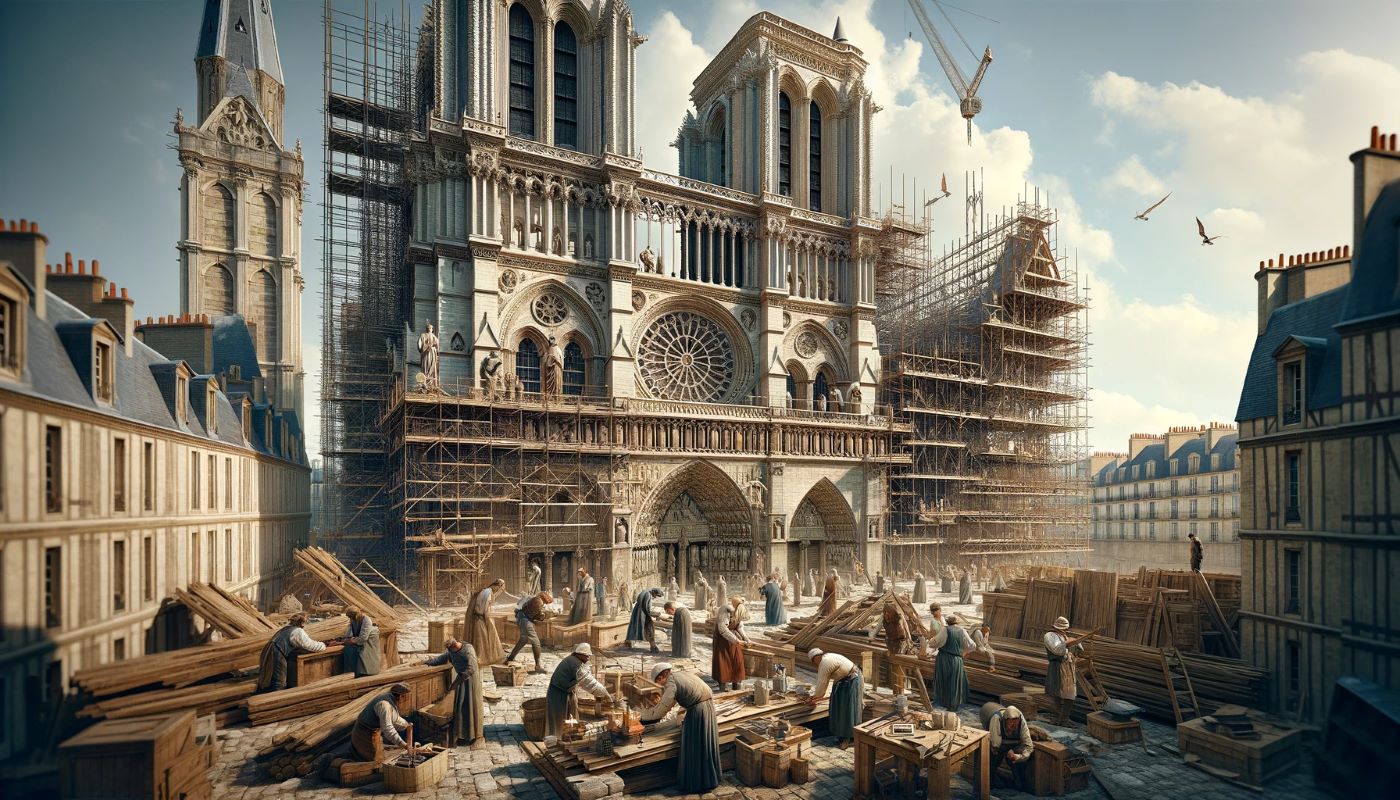Home>Arts and Culture>What Is Notre Dame Cathedral Made Of
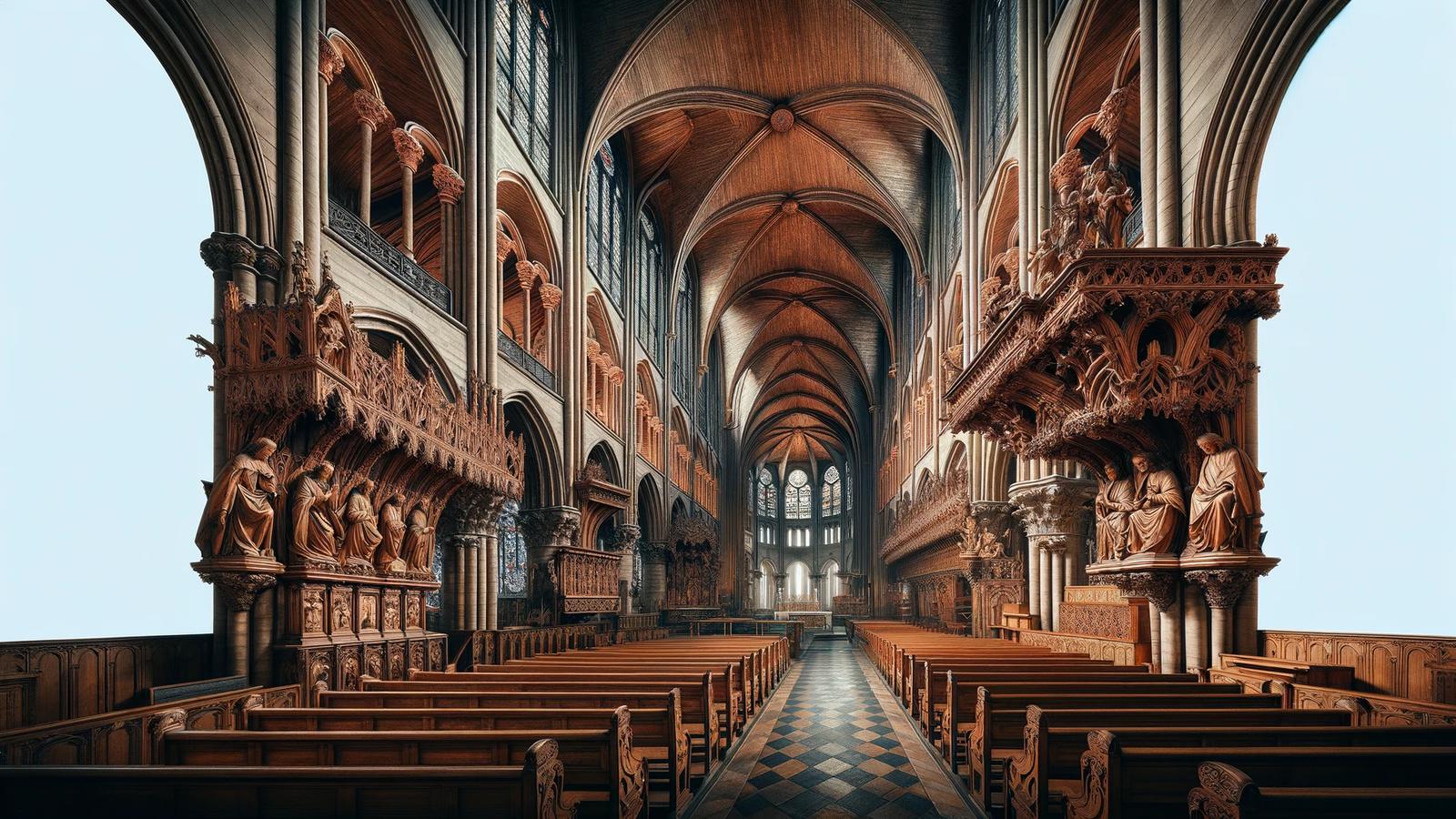

Arts and Culture
What Is Notre Dame Cathedral Made Of
Published: February 16, 2024
Peter Smith, Editorial Director at Christian.net, combines deep insights into faith, politics, and culture to lead content creation that resonates widely. Awarded for his contributions to religious discourse, he previously headed a major organization for religious communicators, enhancing dialogue on faith's societal impacts.
Discover the materials used in the construction of Notre Dame Cathedral and the significance of its architectural elements. Explore the art and culture behind this iconic landmark.
(Many of the links in this article redirect to a specific reviewed product. Your purchase of these products through affiliate links helps to generate commission for Christian.net, at no extra cost. Learn more)
Table of Contents
Introduction
Notre Dame Cathedral, a timeless symbol of Paris, stands as a testament to human ingenuity and artistic expression. This architectural marvel has captivated the hearts and minds of people around the world for centuries, drawing millions of visitors annually to marvel at its grandeur. The cathedral's rich history, stunning design, and the materials used in its construction all contribute to its enduring allure.
As we delve into the intricacies of Notre Dame Cathedral, we will uncover the fascinating story behind its creation, explore the architectural elements that make it a masterpiece, and gain insight into the materials that form its foundation. From the grandeur of its facade to the intricate details of its interior, Notre Dame Cathedral is a treasure trove of art, history, and craftsmanship.
Join us on a journey through time and craftsmanship as we unravel the mysteries and marvels of Notre Dame Cathedral, an architectural wonder that has withstood the test of time and continues to inspire awe and admiration in the hearts of all who behold it.
History of Notre Dame Cathedral
The history of Notre Dame Cathedral is a captivating tale that spans over eight centuries, beginning with its construction in the 12th century. Commissioned by Bishop Maurice de Sully, the cathedral was envisioned as a grand symbol of Parisian pride and religious devotion. Construction commenced in 1163, and it took nearly 200 years to complete this monumental feat of Gothic architecture.
Throughout its storied past, Notre Dame Cathedral has witnessed significant historical events, serving as a backdrop to coronations, royal weddings, and religious ceremonies. Its enduring presence has made it a silent witness to the ebb and flow of French history, from the tumultuous days of the French Revolution to the jubilant celebrations of national triumphs.
The cathedral's significance extends beyond its religious and historical importance, as it has also inspired countless works of art, literature, and music. Victor Hugo's timeless novel, "The Hunchback of Notre Dame," immortalized the cathedral in the hearts of readers worldwide, further solidifying its place in the annals of cultural heritage.
Tragically, Notre Dame Cathedral suffered a devastating fire in April 2019, which caused significant damage to its iconic spire and roof. The global outpouring of support and solidarity in the aftermath of the fire underscored the cathedral's profound impact on people from all walks of life.
Despite the challenges it has faced, Notre Dame Cathedral remains a resilient symbol of human achievement and resilience. Its enduring legacy continues to inspire awe and reverence, reminding us of the enduring power of art, faith, and the human spirit.
As we reflect on the rich tapestry of Notre Dame Cathedral's history, we are reminded of its timeless significance as a beacon of hope, a testament to human creativity, and a living testament to the enduring spirit of Paris and the world at large.
Architecture and Design
The architecture and design of Notre Dame Cathedral are a testament to the ingenuity and vision of the medieval builders who brought this iconic structure to life. As one of the finest examples of French Gothic architecture, Notre Dame Cathedral embodies the grandeur and elegance of this artistic movement, characterized by its soaring spires, intricate rose windows, and ornate flying buttresses.
The cathedral's facade is a masterpiece of sculpted stone, adorned with captivating details that reflect both religious symbolism and earthly motifs. The twin towers, reaching skyward with ethereal grace, stand as guardians of the faith, while the intricately carved portals invite visitors into a realm of spiritual contemplation and artistic splendor.
Notre Dame's interior is a symphony of light and shadow, with towering columns and ribbed vaults creating a sense of ethereal grandeur. The magnificent rose windows, renowned for their vibrant stained glass, infuse the sacred space with a kaleidoscope of colors, casting a mesmerizing glow upon the stone floors and arching ceilings.
The cathedral's design is a harmonious fusion of form and function, with every architectural element serving a purpose beyond mere aesthetics. The flying buttresses, an engineering marvel of the medieval era, provide essential support to the structure, allowing for the lofty heights and expansive interiors that define Gothic cathedrals.
Notre Dame Cathedral stands as a testament to the collective genius of architects, artisans, and craftsmen who dedicated themselves to realizing a vision of transcendent beauty and spiritual significance. Its enduring allure lies not only in its physical form but also in the intangible essence that emanates from its hallowed halls, beckoning visitors to contemplate the intersection of human creativity and divine inspiration.
As we marvel at the architectural splendor of Notre Dame Cathedral, we are reminded of the timeless power of great art to uplift the human spirit and transcend the boundaries of time and space. It stands as a living testament to the enduring legacy of Gothic architecture and the profound impact of visionary design on the hearts and minds of all who behold it.
Materials Used in Construction
The construction of Notre Dame Cathedral stands as a testament to the remarkable craftsmanship and resourcefulness of the medieval builders who brought this architectural marvel to life. The materials used in its construction were carefully selected and meticulously crafted to withstand the test of time and create a lasting legacy of beauty and resilience.
Limestone
The primary building material used in the construction of Notre Dame Cathedral is limestone, sourced from quarries in the Paris Basin. This versatile stone, known for its durability and ease of carving, provided the foundation for the cathedral's iconic facade, intricate sculptures, and towering spires. The creamy hue of the limestone lends a timeless elegance to the cathedral's exterior, creating a striking contrast against the azure sky.
Oak
The majestic timber framework of Notre Dame Cathedral, often referred to as "the forest," is a testament to the importance of oak in medieval construction. The massive oak beams, hewn from ancient forests, form the skeleton of the cathedral, supporting its soaring ceilings and majestic roof. The resilience and strength of oak have allowed the cathedral to withstand the test of time, weathering centuries of history and upheaval.
Lead
The roof of Notre Dame Cathedral, with its iconic spire and intricate network of gutters and downspouts, was clad in lead to provide essential protection against the elements. The malleability and durability of lead made it an ideal choice for waterproofing the cathedral's roof, ensuring that its interior remained safeguarded from rain and snow.
Stained Glass
The vibrant stained glass windows of Notre Dame Cathedral are a testament to the artistry and technical skill of medieval glassmakers. Crafted from a mosaic of colored glass pieces, these windows infuse the interior with a celestial glow, casting a kaleidoscope of colors upon the stone floors and walls. The delicate beauty of the stained glass windows adds a transcendent quality to the cathedral's sacred spaces, inviting contemplation and awe.
Iron
The flying buttresses, a defining feature of Gothic architecture, were reinforced with iron cramps to provide additional strength and stability to the cathedral's exterior. These iron supports, concealed within the stone walls, played a crucial role in counteracting the lateral forces exerted by the lofty vaults and buttresses, ensuring the structural integrity of the cathedral.
The meticulous selection and masterful integration of these materials in the construction of Notre Dame Cathedral have endowed it with a timeless allure and enduring resilience. Each stone, beam, and pane of glass bears witness to the collective vision and dedication of the artisans and craftsmen who labored to create this architectural masterpiece, leaving an indelible mark on the cultural landscape of Paris and the world.
Read more: What Is The Purpose Of Notre Dame Cathedral
The Structure of Notre Dame Cathedral
The structure of Notre Dame Cathedral is a marvel of medieval engineering and architectural ingenuity, embodying the timeless principles of Gothic design and construction. From its soaring spires to its intricate network of vaults and buttresses, every element of the cathedral's structure reflects a harmonious balance of form, function, and symbolic significance.
Flying Buttresses and Ribbed Vaults
One of the defining features of Notre Dame Cathedral is its use of flying buttresses, graceful stone arches that extend from the exterior of the building to provide essential support for the lofty vaulted ceilings. These elegant buttresses not only lend a sense of ethereal beauty to the cathedral's exterior but also serve a crucial structural purpose, counteracting the outward thrust of the vaults and ensuring the stability of the entire edifice.
The interior of Notre Dame Cathedral is adorned with ribbed vaults, a hallmark of Gothic architecture known for their remarkable strength and visual splendor. These intersecting arches and ribs create a web-like network that distributes the weight of the ceiling, allowing for expansive, open interiors flooded with natural light. The ribbed vaults not only contribute to the cathedral's structural integrity but also evoke a sense of celestial grace and transcendence.
Towers and Spire
The twin towers of Notre Dame Cathedral, with their graceful proportions and intricate stone carvings, stand as iconic symbols of Paris and the enduring spirit of human creativity. Rising to majestic heights, these towers offer panoramic views of the city and serve as guardians of the faith, beckoning pilgrims and visitors to contemplate the divine mysteries enshrined within the cathedral's sacred precincts.
The spire, a delicate and ethereal structure that once graced the rooftop of Notre Dame Cathedral, added a celestial touch to the building's silhouette. While tragically lost in the 2019 fire, the spire remains an indelible part of the cathedral's history, a testament to the enduring spirit of resilience and renewal that defines Notre Dame.
The Forest of Notre Dame
Beneath the cathedral's stone exterior lies a hidden marvel known as "the forest," a vast network of oak beams that form the framework of the building's roof and ceilings. These ancient oak timbers, hewn from primeval forests, provide essential support for the cathedral's structure, creating a sense of organic warmth and strength within the hallowed halls of Notre Dame.
Read more: What Religion Is Notre Dame Cathedral?
Rose Windows
The radiant rose windows of Notre Dame Cathedral, renowned for their intricate tracery and vibrant stained glass, infuse the interior with a celestial glow, casting a kaleidoscope of colors upon the stone floors and walls. These masterpieces of medieval craftsmanship serve as luminous focal points, inviting visitors to contemplate the interplay of light, color, and spiritual symbolism within the cathedral's sacred spaces.
The structure of Notre Dame Cathedral stands as a testament to the collective genius of medieval architects, artisans, and craftsmen who dedicated themselves to realizing a vision of transcendent beauty and spiritual significance. Its enduring allure lies not only in its physical form but also in the intangible essence that emanates from its hallowed halls, beckoning visitors to contemplate the intersection of human creativity and divine inspiration.
Restoration and Renovation Efforts
Following the devastating fire that engulfed Notre Dame Cathedral in April 2019, the global community rallied together in a remarkable display of solidarity and support to embark on an ambitious journey of restoration and renewal. The fire, which caused significant damage to the cathedral's iconic spire and roof, served as a poignant reminder of the fragility of cultural heritage and the imperative of preserving this architectural treasure for future generations.
In the wake of the fire, a wave of determination and commitment swept across the world, as experts, artisans, and philanthropists joined forces to undertake the monumental task of restoring Notre Dame Cathedral to its former glory. The restoration efforts have been guided by a steadfast dedication to preserving the cathedral's historical authenticity while incorporating modern techniques and materials to ensure its enduring resilience.
Central to the restoration efforts is the meticulous process of assessing the structural integrity of the cathedral and devising innovative solutions to address the damage caused by the fire. Teams of architects, engineers, and conservationists have worked tirelessly to evaluate the extent of the destruction and develop comprehensive plans for the reconstruction of the damaged portions of the cathedral.
A crucial aspect of the restoration process involves the careful preservation and restoration of the cathedral's priceless artworks, sculptures, and stained glass windows. Skilled conservators and art historians have undertaken the delicate task of cleaning, repairing, and safeguarding these irreplaceable treasures, ensuring that Notre Dame's artistic legacy remains intact for future generations to admire and cherish.
The restoration and renovation efforts have also been marked by a spirit of collaboration and innovation, with experts harnessing cutting-edge technologies and sustainable practices to revitalize the cathedral. From 3D scanning and digital modeling to the implementation of eco-friendly building materials, the restoration project has embraced a forward-thinking approach to safeguarding Notre Dame's legacy for centuries to come.
As the restoration and renovation efforts continue to unfold, the world eagerly anticipates the reemergence of Notre Dame Cathedral in all its splendor. The journey of renewal is a testament to the enduring power of human determination, creativity, and compassion, underscoring the universal significance of Notre Dame as a symbol of resilience and cultural heritage.
The restoration and renovation of Notre Dame Cathedral stand as a testament to the unwavering commitment to preserving our shared cultural legacy and honoring the timeless beauty and historical significance of this architectural masterpiece. It is a testament to the resilience of the human spirit and the enduring legacy of Notre Dame Cathedral as a beacon of hope and inspiration for generations to come.
Conclusion
Notre Dame Cathedral stands as a timeless testament to human creativity, resilience, and the enduring power of art and faith. From its storied history and architectural grandeur to the materials that form its foundation, the cathedral embodies the collective spirit of generations past and present. As we reflect on the rich tapestry of Notre Dame's legacy, we are reminded of its profound impact on the cultural landscape of Paris and the world at large.
The cathedral's history, spanning over eight centuries, is a testament to its resilience in the face of adversity. From the grandeur of its facade to the intricate details of its interior, Notre Dame Cathedral continues to inspire awe and reverence, serving as a living testament to the enduring spirit of Paris and the world at large.
The restoration and renovation efforts following the 2019 fire underscore the global significance of Notre Dame as a symbol of resilience and cultural heritage. The outpouring of support and collaboration from experts, artisans, and philanthropists reflects a shared commitment to preserving this architectural treasure for future generations.
As the restoration and renovation efforts continue to unfold, the world eagerly anticipates the reemergence of Notre Dame Cathedral in all its splendor. The journey of renewal is a testament to the enduring power of human determination, creativity, and compassion, underscoring the universal significance of Notre Dame as a symbol of resilience and cultural heritage.
In conclusion, Notre Dame Cathedral stands as a beacon of hope, a testament to human achievement, and a living embodiment of the enduring power of art, faith, and the human spirit. Its timeless allure continues to captivate the hearts and minds of people around the world, inviting us to contemplate the intersection of history, art, and the enduring legacy of this architectural masterpiece. As we look to the future, Notre Dame Cathedral remains an enduring symbol of inspiration and a testament to the enduring legacy of human creativity and resilience.
